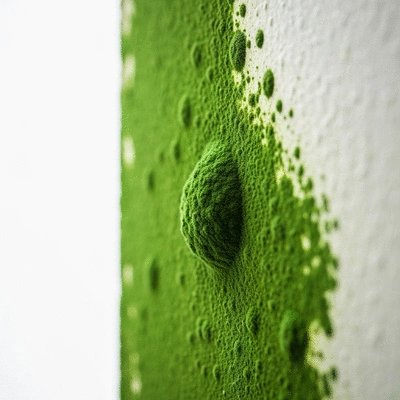Condensation
Occurs in poorly ventilated areas, leading to moisture buildup.
Unlock your FREE 'Quick-Start Guide to No Win No Fee Claims' and demystify the legal process.
Posted on: 2025-09-19
By: Sarah Thompson
Understanding damp and mould issues in rental properties is crucial for maintaining a healthy living environment. Here’s why knowing your rights and responsibilities as a tenant can empower you to take action.
Understanding the different types of damp is crucial for effective remediation. Below is a summary of the three main types:
Occurs in poorly ventilated areas, leading to moisture buildup.
Water seeps through walls due to faulty roofing or plumbing.
Groundwater rises through walls and floors, often seen in older properties.
Damp and mould issues in rental properties can feel overwhelming, especially if you’re not familiar with what they entail. In simple terms, damp refers to excess moisture in a building, which can lead to the growth of mould—a fungus that can appear as discolored patches on walls or ceilings. Recognizing these challenges is the first step toward tackling them effectively.
Common signs of damp include peeling wallpaper, a musty smell, and, of course, visible mould. If you’re renting a property in Birmingham and notice any of these signs, it’s important to take action promptly. Ignoring these issues can lead to more significant problems down the line, including serious health risks and potential damage to the property itself. For a comprehensive guide on your rights, consider understanding housing disrepair claims.
Damp can arise from various sources, such as rain penetration, condensation, or rising damp from the ground. Each type has its own causes, and understanding these can help in identifying the right solution. Here’s a quick overview:
Recognizing the type of damp is crucial because it influences the approach needed for remediation. Addressing these issues promptly will not only improve your living conditions but also protect the integrity of the property.
Living in a damp environment can have serious repercussions on both your health and the property itself. Mould spores can circulate in the air, leading to respiratory issues and other health concerns, particularly for individuals with pre-existing conditions. It's essential to understand these risks to motivate prompt action against damp and mould.
Exposure to damp and mould can lead to a variety of health issues, including:
It’s crucial to note that the effects can be more pronounced in children, the elderly, and individuals with compromised immune systems. Ensuring a safe living environment is a fundamental tenant right, and being aware of these health risks empowers you to seek necessary repairs.
Beyond health concerns, mould can present safety hazards in rental properties. It can weaken structural elements and lead to property deterioration. For instance, if mould affects wooden beams, it can compromise the property's stability. Therefore, timely intervention is crucial. If you notice mould, it's important to address it not just for your health but also for the long-term integrity of your home! For more information on what landlords are responsible for, read about landlord responsibilities for property repairs.
Understanding your rights as a tenant and your landlord's responsibilities is vital when dealing with damp and mould issues. By knowing the legal framework that governs housing disrepair, you can take informed steps toward resolving these problems effectively.
The law provides several protections for tenants facing disrepair issues like damp and mould. Key legislation outlines both landlord obligations and tenant rights, ensuring that everyone has access to safe and habitable living conditions. Here are some important laws to be aware of:
This act is fundamental, as it requires landlords to keep properties in a condition fit for living. This includes addressing issues like damp and mould. If your landlord fails to comply, you have the right to take action.
The Housing Act 2004 further establishes standards for housing conditions, including provisions for health and safety assessments. This legislation empowers tenants to report concerns regarding their living conditions.
Perhaps one of the most significant pieces of recent legislation, this act mandates that all rental properties must be fit for human habitation. This means that landlords are legally required to ensure properties are free from hazards like damp and mould.
Landlords have a legal duty to maintain their properties, which includes addressing damp and mould issues promptly. If these problems develop due to structural defects, the responsibility lies with the landlord to take necessary actions. Tenants should communicate concerns early and keep records of any correspondence regarding these issues.
As a tenant, you have specific rights when it comes to dealing with damp and mould. You are entitled to live in a property that is safe and free from hazards, which includes ensuring that damp issues are addressed. Here’s what you should know:
Under property law, tenants have the right to request repairs, and landlords are obligated to respond. If your landlord neglects to address these concerns, you may have grounds to seek further action, such as filing a complaint or considering a housing disrepair claim. At Solicitors No Win No Fee, we are here to guide you through this process and ensure you understand your options fully.
When addressing damp and mould issues in your rental property, consider proactively improving ventilation. Simple actions like opening windows regularly, using exhaust fans in kitchens and bathrooms, and ensuring furniture is not blocking air vents can significantly reduce moisture levels and prevent mould growth.
As a tenant facing damp and mould issues, knowing your rights and options is crucial to ensuring your living conditions are safe and healthy. It can feel overwhelming, but taking action is your best path forward. At Solicitors No Win No Fee, we're dedicated to empowering you with the right information to navigate these challenging situations confidently.
Here are the key takeaways regarding claiming compensation for damp and mould issues:
Remember, you have the right to a safe, healthy living environment. Taking action against damp and mould is not just about compensation; it’s about ensuring your home is a place of comfort and security!
Your living conditions matter, and it’s important to voice your concerns if you’re facing damp and mould issues in your rental property. Don't hesitate to report these problems to your landlord. The longer you wait, the more severe the situation may become, affecting both your health and your property.
Here’s why you should take action:
At Solicitors No Win No Fee, we believe in empowering tenants to take the necessary steps against disrepair. Your well-being and rights are paramount, so take action today!
If you're feeling uncertain about how to navigate damp and mould claims, reaching out to legal experts can provide clarity and direction. Solicitors No Win No Fee is here to assist you with your claims under no win no fee arrangements. This means you can pursue your case without the risk of upfront legal costs! Learn more about understanding no win no fee claims.
Additionally, consider contacting the Housing Ombudsman, who can guide you on how to address ongoing disputes with your landlord effectively. They offer a wealth of resources and support for tenants facing disrepair issues.
Understanding your rights as a tenant is essential. Here are some resources you can explore to expand your knowledge:
Building regulations set forth by the government dictate the necessary standards for rental properties, ensuring they are safe and habitable. Familiarizing yourself with these regulations can help you understand your landlord's obligations.
Consider hiring a professional for a mould inspection or damp survey if you suspect severe issues. This not only provides you with solid evidence for your claim but also establishes the extent of the problem, guiding the necessary repairs to maintain a safe living environment.
Here is a quick recap of the important points discussed in the article:



 Have you ever found yourself needing legal support after an accident? Understanding After-the-Event
Have you ever found yourself needing legal support after an accident? Understanding After-the-Event
 Understanding the impact of housing disrepair is more than just recognizing unsafe conditions; it's
Understanding the impact of housing disrepair is more than just recognizing unsafe conditions; it's
 Every year, countless tenants face the daunting issue of housing disrepair, often wondering if withh
Every year, countless tenants face the daunting issue of housing disrepair, often wondering if withh